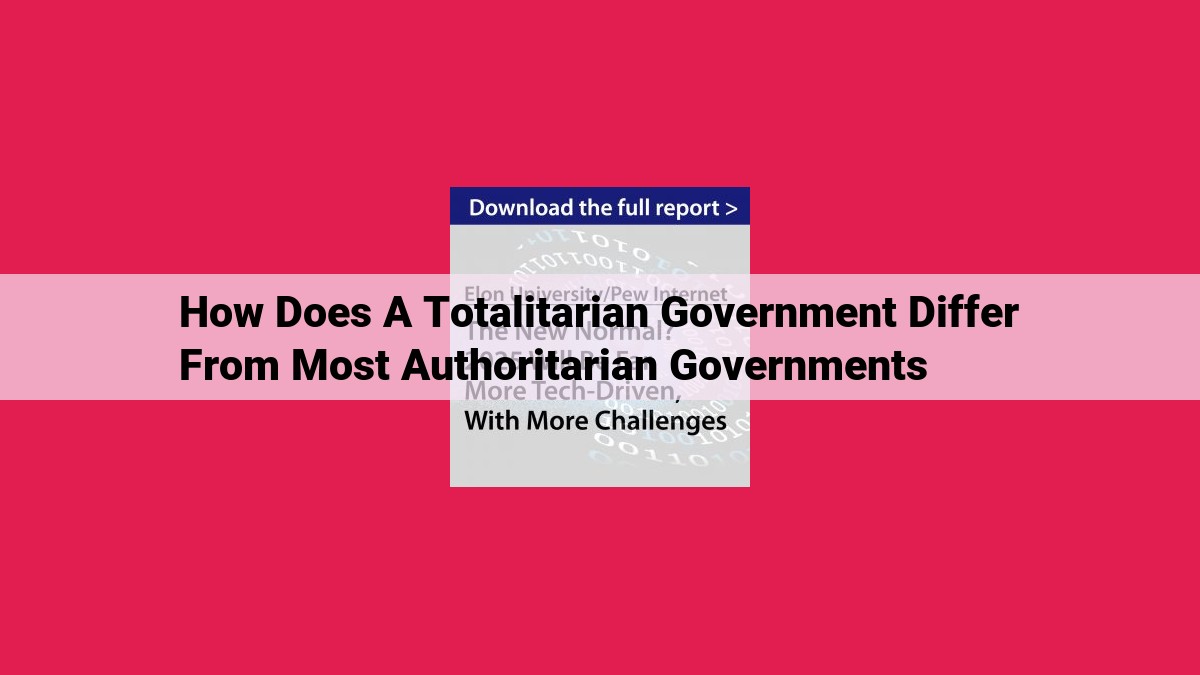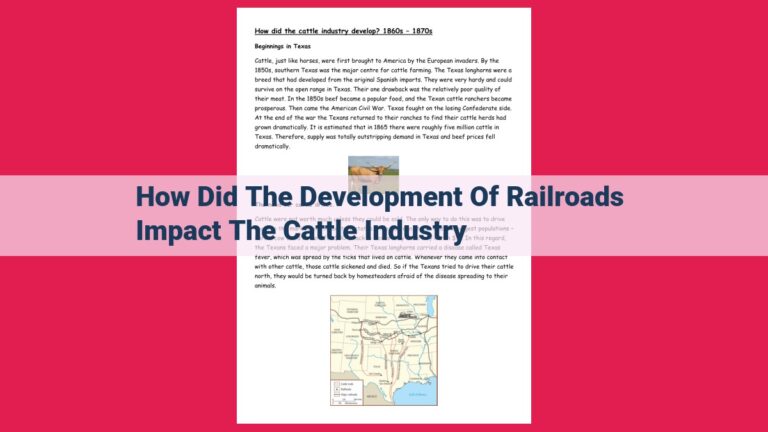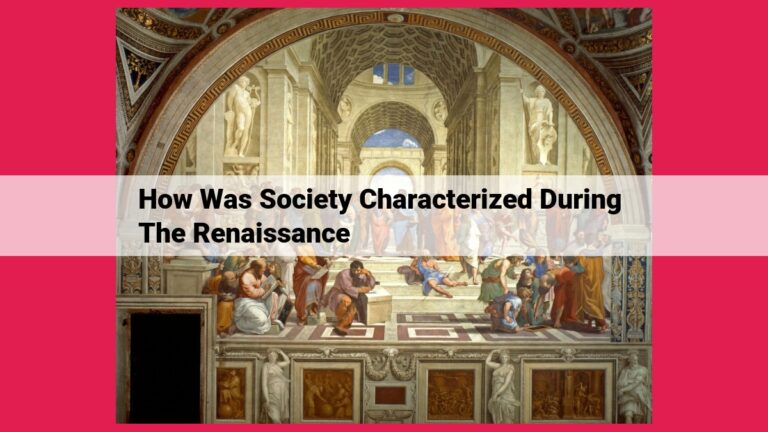Totalitarian Regimes: Comprehensive Control And Suppression Beyond Authoritarianism

Totalitarian governments, a more extreme form of authoritarianism, exert comprehensive control over all aspects of society, including cultural, social, and economic spheres. Unlike authoritarian regimes, which may allow limited political opposition and freedoms, totalitarian governments enforce strict ideological dominance, pervasive propaganda, extensive surveillance, and suppression of all dissent, aiming for complete societal control and rejection of democratic principles.
Authoritarian Governments: A Deeper Dive
An authoritarian government wields centralized power, leaving little to no room for political opposition or dissenting views. Key characteristics include:
-
Limited Political Opposition: Only a select few can participate in politics, ensuring that power remains in the hands of a small elite.
-
Restricted Freedoms: Civil liberties such as freedom of speech, press, and assembly are severely limited to prevent any challenges to the ruling authority.
Citizens have little say in how they are governed, and the government’s authority is absolute. However, authoritarian governments may allow a semblance of citizen participation through limited elections or other controlled mechanisms that maintain the status quo.
Totalitarianism: The Pinnacle of Authoritarian Rule
In the realm of political systems, there exists a spectrum of control, ranging from liberal democracies to the extreme of totalitarianism. Authoritarian regimes, characterized by centralized power and suppression of dissent, represent one end of this spectrum. However, at the far end lies totalitarianism, an extreme form of authoritarianism that exerts an all-encompassing grip over every aspect of society.
Unlike authoritarian governments, which may allow limited forms of political opposition and social freedoms, totalitarian regimes strive for absolute control over the entire population. They seek to shape every facet of life, from the economy to the media, from religion to personal beliefs. Totalitarian rulers aim to dominate not only the physical realm but also the mind and soul of their subjects.
One of the key distinguishing characteristics of totalitarian regimes is their ideological dominance. They espouse a rigid ideology that permeates all aspects of society, from education to the arts. This ideology serves as a unifying force and a source of justification for the regime’s actions. It creates a sense of conformity and discourages any form of dissent or deviation.
Propaganda plays a crucial role in maintaining ideological dominance in totalitarian regimes. The government controls all forms of communication, using them to disseminate its ideology and silence dissenting voices. Citizens are subjected to a constant barrage of propaganda, which shapes their worldviews and reinforces the regime’s legitimacy.
Surveillance and repression are also fundamental pillars of totalitarian rule. Totalitarian regimes employ sophisticated surveillance mechanisms to monitor the behavior of their citizens, seeking to detect any signs of disloyalty or opposition. Those who dare to challenge the regime are met with swift and severe punishment, serving as a warning to others.
In conclusion, totalitarianism represents the most extreme form of authoritarianism, characterized by its comprehensive control over all aspects of society. Its ideological dominance, propaganda, and surveillance and repression create a suffocating atmosphere where individual freedom and autonomy are extinguished. Totalitarian regimes aim to create a society where the state’s authority is absolute and unquestioned, and where the individual is but a mere cog in the machinery of the state.
Scope of Control: Authoritarian vs. Totalitarian Regimes
In the realm of oppressive governance, both authoritarian and totalitarian regimes wield power over their citizens. However, the scope of their control significantly distinguishes these two political systems.
Authoritarian Governments:
Authoritarian governments primarily focus on political control. They suppress political opposition, limit freedom of speech and assembly, and control the flow of information. Their grip is firm on political institutions and restricts the formation of independent organizations or movements that challenge their authority.
Totalitarian Governments:
Totalitarian regimes, on the other hand, strive for comprehensive control over all aspects of society. They extend their influence beyond the political sphere into the cultural, social, and economic realms. In totalitarian societies, the state dictates the norms and values of its citizens, dictating what they can read, watch, and believe.
Cultural Control:
Totalitarian regimes use propaganda, indoctrination, and censorship to shape the cultural landscape. They promote a single, state-approved ideology and suppress any dissenting voices or alternative viewpoints. Education and the media are tightly controlled to ensure that the populace absorbs the regime’s propaganda.
Social Control:
In totalitarian societies, every aspect of social life is subject to state regulation. Surveillance is pervasive, monitoring citizens’ activities and communications. Social organizations are heavily controlled or disbanded outright. The regime seeks to atomize society and prevent the formation of independent bonds or communities that could challenge its authority.
Economic Control:
Totalitarian regimes often exercise state control over the economy. They dictate production, distribution, and consumption, eliminating private property and market competition. The goal is to ensure that all economic resources are at the state’s disposal for the advancement of its agenda.
In summary, while authoritarian governments primarily focus on political control, totalitarian regimes extend their influence into all spheres of society, leaving little room for individual freedom or autonomy. Their comprehensive scope of control is a defining characteristic that sets them apart from their authoritarian counterparts.
Distinctive Features Separating Totalitarianism from Authoritarianism
At the heart of political science lies the distinction between authoritarian and totalitarian regimes. While both exercise significant control over their citizens, the methods and extent of their domination differ strikingly.
Ideological Dominance: A Forceful Embrace vs. Subtle Influence
Totalitarian governments relentlessly impose their ideology upon all aspects of society. They mold not only political thought but also the realms of education, art, and even religion. Authoritarian regimes, in comparison, allow for a modicum of ideological diversity, tolerating some degree of deviation from the official line.
Propaganda: Incessant Bombardment vs. Controlled Narrative
Totalitarian regimes unleash a torrent of propaganda to shape public opinion, leaving no room for dissent. Mass media, education, and art become tools for indoctrination. Authoritarian regimes, on the other hand, employ propaganda more cautiously, limiting its scope to bolster support for the regime and suppress overt opposition.
Surveillance: All-Encompassing Gaze vs. Selective Monitoring
Totalitarian governments maintain an extensive surveillance apparatus, constantly monitoring their citizens’ every move. They penetrate private spaces, intercept communications, and create an atmosphere of pervasive fear. Authoritarian regimes, meanwhile, target surveillance more selectively, focusing on potential dissidents and perceived threats.
Suppression of Freedoms: Absolute Quashing vs. Limited Restrictions
Totalitarian regimes deny their citizens virtually all fundamental freedoms. They suppress all forms of dissent, imprison political opponents, and control access to information. Authoritarian regimes, while limiting certain freedoms, may allow for some degree of expression and assembly, albeit under strict constraints.
Social Control: Totalitarian vs. Authoritarian Regimes
In the realm of governance, the extent and nature of social control exercised by a regime can determine the very fabric of a society. Nowhere is this more evident than in the stark contrast between totalitarianism and authoritarianism.
Totalitarian Regimes: All-Encompassing Dominance
Totalitarianism represents the extreme manifestation of authoritarianism, elevating social control to unprecedented heights. It aims for complete domination over every facet of society, from the corridors of power to the privacy of citizens’ homes. Every aspect of life is subject to the scrutinizing gaze of the state, with the goal of molding every thought, word, and action in accordance with its ideology.
Surveillance and Suppression
Totalitarian regimes wield a formidable apparatus of surveillance and suppression to maintain their iron grip. A maze of secret police, informants, and surveillance networks permeates society, keeping a watchful eye on every citizen’s activities. Dissent is ruthlessly suppressed, and nonconformity is met with swift and severe retribution. Individuals are coerced into conformity, and any flicker of independent thought is extinguished.
Authoritarian Regimes: A Limited Sphere of Control
In contrast to totalitarian regimes, authoritarian governments exercise a more limited scope of social control. While they may restrict political freedoms and dissent, they generally tolerate a degree of autonomy in other areas of life. Citizens may enjoy some privacy in their personal lives, engage in limited forms of cultural expression, and pursue economic activities within certain boundaries.
Coercion and Indoctrination
Authoritarian regimes primarily rely on coercion to maintain control. They use force and threats of punishment to deter opposition and enforce compliance. However, they may also employ indoctrination through state-controlled media, education, and propaganda to shape public opinion and promote loyalty to the regime.
Key Differences in Social Control
- Scope: Totalitarian regimes seek complete control over all aspects of society, while authoritarian regimes have a more limited sphere of influence.
- Methods: Totalitarian regimes rely heavily on surveillance, suppression, and ideological indoctrination, while authoritarian regimes primarily use coercion and limited indoctrination.
- Tolerance: Totalitarian regimes do not tolerate dissent or nonconformity, while authoritarian regimes may allow for some degree of personal autonomy and cultural expression within circumscribed limits.
Ideological Flexibility: Authoritarian vs. Totalitarian
Authoritarian governments possess limited ideological flexibility. They allow for some dissent and conformity within acceptable boundaries. Within these regimes, individuals can voice opinions that do not directly challenge the established order. However, outright opposition or radical ideas are often swiftly suppressed.
Totalitarian governments, on the other hand, exhibit zero ideological flexibility. They demand complete adherence to a rigidly defined ideology. Dissent is considered a grave threat, and conformity is enforced at all costs. In totalitarian societies, individuals live under the constant scrutiny of the state, with any deviation from the official narrative met with severe consequences.
The implications are profound:
-
Under authoritarian regimes, individuals can maintain a semblance of privacy and participate in limited forms of expression. Dissent may be tolerated as long as it remains within the tolerable range.
-
In contrast, totalitarian regimes eradicate all traces of individuality and critical thinking. The state’s ideology permeates every aspect of life, from cultural norms to economic policies. Individuals are indoctrinated from birth with a singular “correct” worldview.
In short, the contrast in ideological flexibility between authoritarian and totalitarian governments is stark. While the former allows for some breathing room, the latter suffocates any hint of dissent, creating a society where conformity is the only acceptable path.
Democratic Legitimacy: Authoritarian vs. Totalitarian Governments
In the spectrum of oppressive regimes, authoritarian and totalitarian governments stand apart, each with its own unique approach to democratic legitimacy.
While authoritarian governments may offer a façade of democracy through elections or parliaments, these institutions are often mere rubber stamps for the ruling elite’s decisions. Real power is centralized in the hands of a single leader or a small group, and opposition is severely restricted.
In contrast, totalitarian governments outright reject democratic principles. They establish a monolithic political system that annihilates all forms of dissent and independent thought. Elections are staged events with no genuine choices, and citizens are compelled to conform to the ruling party’s ideology.
The crucial distinction lies in the scope of democratic legitimacy. Authoritarian governments may tolerate a limited degree of political pluralism and civil liberties, while totalitarian governments aim to totalize control over all aspects of society, including the political, economic, social, and cultural spheres.
This fundamental difference has profound implications for the citizens’ daily lives. In totalitarian regimes, there is no escape from the ideological grip of the state. Propaganda permeates every channel of communication, and surveillance pervades every corner of society. Citizens are dispossessed of their individual rights and reduced to mere cogs in the ideological machinery of the state.
In contrast, authoritarian governments may allow some breathing room for non-political activities. Citizens may engage in private religious practices, pursue economic interests, or express personal opinions within narrow limits. However, any challenge to the ruling authority risks severe consequences.
The contrasting approaches to democratic legitimacy between authoritarian and totalitarian governments reflect their inherent nature. Authoritarianism seeks to maintain control while allowing a degree of dissent, while totalitarianism strives to annihilate all forms of opposition and establish a totalizing grip on society.
Summary of Distinctions between Totalitarianism and Authoritarianism
In the realm of political systems, authoritarianism and totalitarianism stand as stark contrasts, each exerting a unique brand of control over society. While both restrict freedoms and suppress opposition, they differ significantly in their scope, ideology, and methods of suppression.
Scope of Control
Totalitarianism represents the extreme end of authoritarianism, extending its iron grip into every aspect of life. Like an invasive weed, it seeps into the cultural, social, and economic realms, suffocating individuality and pluralism. Authoritarianism, in comparison, tends to focus its control primarily on political and civil matters, leaving some semblance of autonomy in other areas.
Ideological Rigidity
Ideology serves as the lifeblood of totalitarian regimes. They adhere to a rigid, all-encompassing dogma that dictates every facet of society, from education to entertainment. Dissent is not tolerated; conformity is demanded. Authoritarian governments, on the other hand, may exhibit some degree of ideological flexibility, allowing for limited pluralism and the expression of certain non-conformist views.
Methods of Suppression
The tactics employed to suppress dissent and maintain control vary between totalitarianism and authoritarianism. Totalitarian regimes rely heavily on relentless propaganda, pervasive surveillance, and brutal force to silence opposition and crush resistance. Authoritarianism, while still utilizing coercion and suppression, may employ more subtle methods, such as selective persecution and control of the media.
Democratic Legitimacy
Totalitarian regimes openly reject democratic principles, relying instead on force and fear to maintain their grip on power. Authoritarian governments, on the other hand, may maintain a façade of democratic legitimacy through nominally free elections and constitutional institutions. However, these institutions are often manipulated or rendered powerless to provide any genuine accountability or representation.
In essence, totalitarianism is the ultimate manifestation of authoritarianism, a suffocating blanket that envelops every fiber of society. Authoritarianism, while still oppressive and antithetical to democratic values, may exhibit certain limitations in its control and tolerate some degree of pluralism or individual autonomy. Understanding these distinctions is crucial for comprehending the nature of political systems and their impact on the lives of those who live under them.





